While Five9 is a leading cloud contact center platform, many organizations seek alternatives that better fit their unique needs or leverage emerging AI capabilities. This guide compares SuperU (an AI voice agent platform) and six other top competitors against Five9, focusing on automation, AI quality, cost, agent productivity, and ease of deployment. Each section highlights strengths and key features drawn from industry analysis.
SuperU Vs Five9
Strengths: SuperU is a fully AI voice agent platform that automates phone interactions end to end. Unlike Five9’s traditional IVR and blended agent model, SuperU can handle routine customer inquiries and transactions without live agents. It uses AI to recognize caller intent and respond conversationally, significantly reducing manual dialing and transfer tasks. Because SuperU agents are software based, they can run 24/7, instantly scale to meet spikes, and continuously learn from new calls.
AI and Automation: SuperU delivers best automation than Five9’s built in dialer or chatbots. Its voice agents support full conversational workflows – from information gathering to task completion – with little human intervention. This advanced AI comprehension means fewer calls need escalation, freeing live agents for complex issues. SuperU’s AI also includes sentiment analysis and adaptive learning, improving response accuracy over time.
Cost Efficiency: Deploying SuperU can lower staffing and infrastructure costs. By automating high volume call types, businesses need fewer live agents per incoming call. SuperU’s pricing is $0.02/min for large scale usage based can be more cost effective than Five9’s per seat licensing, especially at scale. Companies often find the total cost of ownership is lower because there’s no need for long term contracts or expensive telephony add ons.
Agent Productivity & Onboarding: With SuperU handling routine work, human agents focus on high value tasks. SuperU provides live agents real time call summaries and suggested next steps, speeding up handling of escalated calls. Onboarding is faster, too: deploying a SuperU voice agent requires no custom hardware or complex integration. IT teams configure call flows via intuitive builders rather than coding IVR scripts, making rollout quicker and avoiding Five9’s reputation for a steep setup curve. In summary, SuperU’s AI and streamlined setup deliver more efficient customer experiences than Five9’s legacy approach.
RingCentral
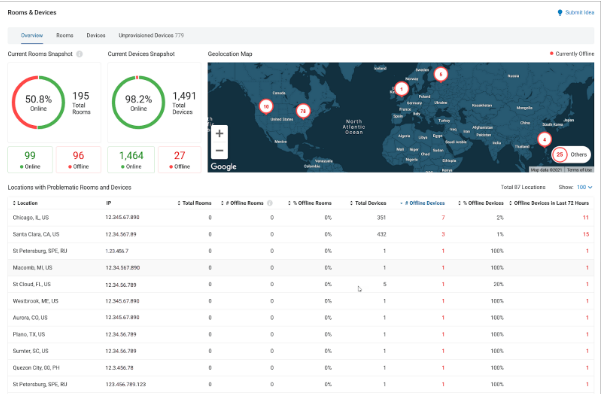
Strengths: RingCentral is a unified communications and contact center platform known for its robust calling features and integration ecosystem. Its strengths include powerful outbound dialing tools and comprehensive omnichannel routing. RingCentral’s progressive, predictive, and preview dialers boost agent productivity by automating campaign dialing and suppressing disconnected numbers in real time.
Key features:
- RingCentral supports multiple channels (voice, email, SMS, social media, chat) with intelligent IVR and ACD routing.
- Its omnichannel design routes inquiries based on agent skills and availability across all channels.
- The platform provides detailed analytics: speech and text analytics, real time dashboards, and quality scoring help managers spot trends and troubleshoot issues quickly.
- For example, supervisors can view call recordings with transcripts and metrics to coach agents. RingCentral also offers integrations with popular CRMs and business tools, enabling data sharing across systems.
Why it’s a compelling alternative: Organizations that already use RingCentral for business phone service can extend its capabilities to contact center needs. Its strong outbound dialer and unified communications features make it ideal for businesses that want one vendor for both UCaaS and CCaaS. Unlike Five9’s more complex IVR setup, RingCentral emphasizes ease of use and seamless integration with existing voice and messaging apps.
NICE CXone
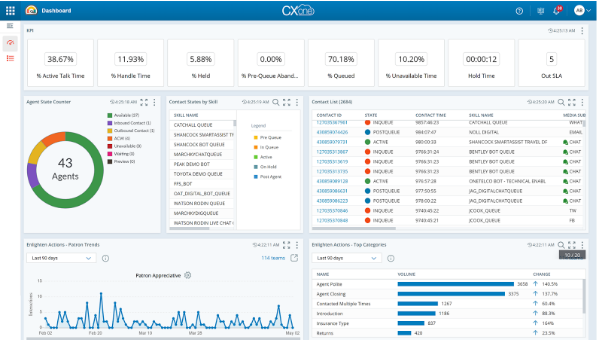
Strengths: NICE CXone stands out for its advanced AI and analytics focus. It emphasizes agent enablement through AI driven coaching and customization. NICE’s virtual assistant (NEVA) provides real time suggestions and guidance to agents, improving performance and customer handling.
Key features:
- The platform is highly customizable, offering granular control over queue routing, IVR flows, and reporting.
- Businesses can tailor contact flows to unique processes, and the system integrates deeply with CRM tools (Salesforce, HubSpot, Zendesk, etc.).
- NICE CXone is best known for its AI powered analytics – it delivers detailed insights into customer behaviors, agent efficiency, and contact trends.
- For instance, supervisors get on the spot coaching prompts (like upsell suggestions) if the AI detects an opportunity during a call.
Why it’s a compelling alternative: For enterprises seeking sophisticated automation and coaching, NICE offers a highly configurable solution that goes beyond standard IVR. Its AI driven features (such as agent performance scoring and analytics) can greatly enhance efficiency and quality of service. Compared to Five9, NICE provides more built in AI for workforce engagement and customer insight, making it suitable for organizations prioritizing intelligent self service and personalization.
Genesys Cloud CX
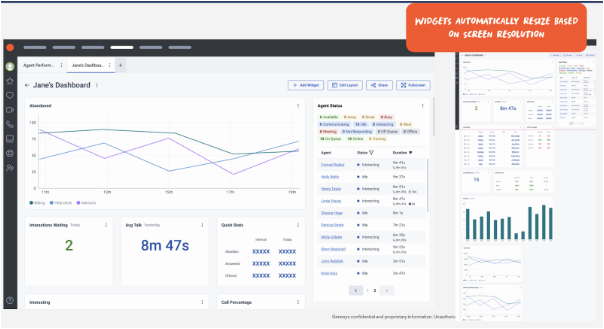
Strengths: Genesys Cloud CX is built for large scale, complex contact centers. It offers end to end omnichannel management with enterprise grade features. Genesys provides robust inbound and outbound call management, skill based routing, and real time monitoring. Its workforce management, scheduling, and gamification tools help optimize agent efficiency.
Key features:
- Genesys excels at analytics and automation. The platform delivers a 360 degree view of all customer interactions, with real time and predictive analytics dashboards.
- Supervisors can track key KPIs and use predictive algorithms to forecast staffing needs.
- Genesys also offers advanced quality management – including automated call transcription, sentiment analysis, and agent scoring – to continuously improve performance.
- On the self service side, Genesys includes configurable IVR and AI powered chatbots that understand natural language and even detect caller sentiment.
Why it’s a compelling alternative: Genesys is ideal for large businesses with complex requirements. Its strength lies in scalability and customization: it can handle thousands of agents with strict compliance needs. Compared to Five9, Genesys provides a richer analytics suite and more powerful AI tools (e.g. predictive routing and a vast virtual assistant framework). Companies that need a comprehensive analytics hub and advanced self service will find Genesys particularly compelling.
Talkdesk
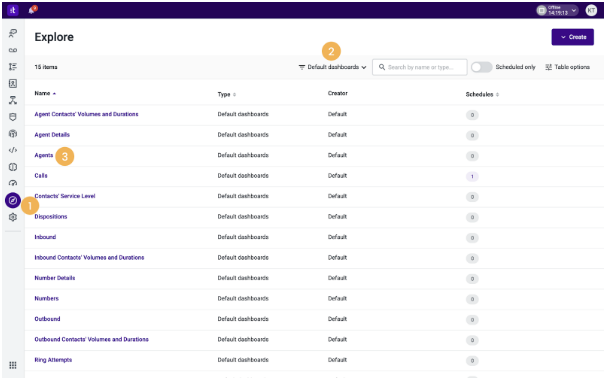
Strengths: Talkdesk is praised for its ease of use and rapid deployment. New users find its interface very intuitive, so agents can start handling calls quickly with minimal training. Talkdesk also includes built in internal collaboration tools, allowing agents to chat or pull in experts without leaving the platform.
Key features:
- The platform is infused with AI: Talkdesk offers virtual agents and customer journey analytics that provide agents with real time insights and suggestions.
- It supports full omnichannel engagement – SMS, chat, email, and social messaging – unified under a single agent desktop.
- Talkdesk’s analytics dashboard is highly customizable, giving supervisors a data-driven view of operations. Notably, Talkdesk has 70+ pre built app integrations (Salesforce, Zendesk, Slack, etc.) and extensive security certifications (SOC 2/3, HIPAA, GDPR) for compliance.
Why it’s a compelling alternative: For teams that value a user friendly experience and innovation, Talkdesk is a strong candidate. Its focus on straightforward setup and modern UX lowers the learning curve compared to Five9’s steeper interface. Despite its simplicity, Talkdesk still delivers enterprise features (omnichannel routing, analytics, AI) and extensive integrations. Mid sized businesses looking to modernize quickly often choose Talkdesk for its balance of power and usability.
8×8
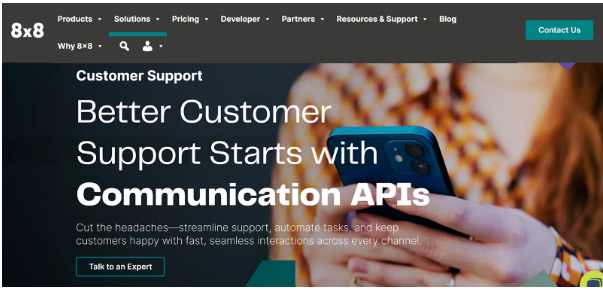
Strengths: 8×8 offers an all in one communications platform that combines voice, messaging, video (UCaaS) with omnichannel contact center (CCaaS) capabilities. Its “composable” model lets organizations customize plans – they can pick and pay for only the channels they need.
Key features:
- 8×8 supports full omnichannel routing across all digital and voice channels. Its skill based routing engine ensures agents handle the right mix of chat, email, social, or calls.
- A centralized performance dashboard provides real time visibility into agent activity and call metrics.
- 8×8 also includes quality management and AI analytics out of the box.
- Supervisors can leverage built in speech analytics and sentiment insights to coach teams and measure effectiveness. Additionally, open APIs allow deep customization and integration with CRM and third party tools.
Why it’s a compelling alternative: Companies seeking a single-vendor solution for both UC and CC find 8×8 attractive. Its scalable architecture and comprehensive feature set rival Five9, but with flexible pricing and strong analytics. In particular, 8×8’s built in quality management and AI insights give it an edge for organizations wanting deeper automation and reporting. The ability to mix and match UC features (like video or messaging) can also simplify budgeting for growing businesses.
Webex by Cisco
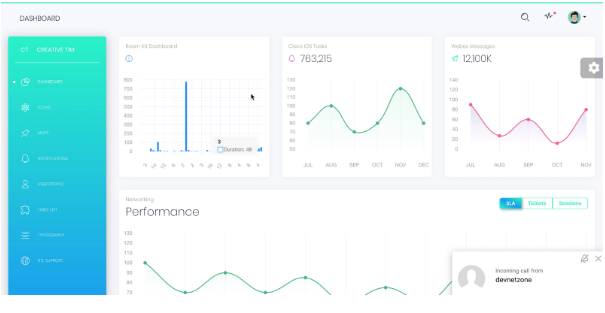
Strengths: Cisco’s Webex Contact Center integrates seamlessly with the Webex collaboration suite (meetings, messaging, calling). For businesses already invested in Cisco’s ecosystem, this offers a unified administration and user experience. Webex CC is a cloud native platform, providing elasticity for scalability while retaining Cisco’s networking reliability.
Key features:
- Webex supports intelligent call routing and customizable contact flows. It offers advanced IVR and Intelligent Virtual Agents (IVAs) that can handle simple inquiries or transfer complex issues to live agents.
- The platform’s drag and drop call flow designer and queue callbacks make it easy to configure.
- Importantly, Webex provides robust analytics: it delivers 360 degree customer journey views and predictive routing recommendations to optimize service levels.
- Unique AI innovations (such as the “Thrive Reset” feature) monitor agent stress and prompt breaks to maintain productivity.
Why it’s a compelling alternative: Webex CC is ideal for enterprises deep into Cisco technology. Its integration with Cisco collaboration tools means features like click to call from meetings or persistent chats are possible. Compared to Five9, Webex places extra emphasis on agent well being and leverages Cisco’s broad communications portfolio. Organizations that need carrier grade infrastructure and global coverage may favor Webex for its scalability and familiar Cisco architecture.
Aircall
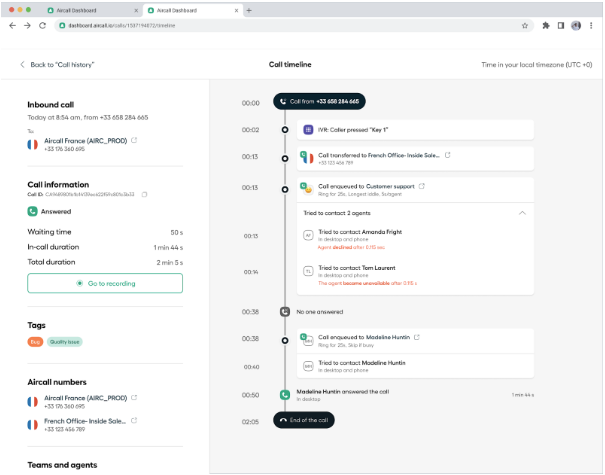
Strengths: Aircall is built for simplicity and speed. It has a clean, intuitive interface that agents can learn quickly, with minimal training. Because Aircall runs on a cloud phone system backbone, setup and onboarding are rapid (agents can often start calling within hours).
Key features:
- Aircall focuses on core telephony and call center functionality.
- It includes IVR with queueing, time based routing (e.g. business hours rules), and the ability to use local and toll free numbers worldwide.
- Call recording (with optional transcription), warm transfers, call tagging, and real time analytics are standard.
- Aircall integrates natively with common CRMs and helpdesk tools, so customer context is right at the agent’s fingertips.
Why it’s a compelling alternative: For small to mid size, call centric teams, Aircall offers a rapid, cost effective deployment compared to Five9’s complexity. Its pricing is competitive – for example, its highest plan (~$50–70/user) provides essential CCaaS features at a lower cost than Five9’s enterprise tiers. In short, Aircall delivers straightforward call handling functionality with easy implementation, making it a solid choice when advanced omnichannel features are not required.
Five9 Alternatives Comparison
| Solution | Strengths | Ideal for | Omnichannel Support | Integrations | Pricing |
|---|---|---|---|---|---|
| SuperU | Fully AI-driven voice automation and self-service | Teams wanting 24/7 automated call handling | No (voice only) | Yes (APIs/CRM) | Flexible (contact sales) |
| RingCentral | Unified UC/CC platform; robust outbound dialers | Businesses needing integrated voice and digital channels | Yes | Yes (e.g. Salesforce) | Starts ~$30/user/month (phone) |
| NICE CXone | Advanced AI analytics and agent coaching | Enterprises needing sophisticated AI and customization | Yes | Yes (Salesforce, etc.) | Starts ~$71/user/month |
| Genesys Cloud CX | Enterprise-grade analytics and scalability | Large organizations with complex deployments | Yes | Yes | Custom quote |
| Talkdesk | Intuitive UI; AI-driven engagement tools | Teams prioritizing ease of use and rapid deployment | Yes | Yes (70+ apps) | $85–$145/user/month |
| 8×8 | Composable all-in-one UCaaS + CCaaS | Businesses seeking an all-in-one communications solution | Yes | Yes | Custom quote |
| Webex (Cisco) | Cisco ecosystem integration; advanced IVR | Companies invested in Cisco/Webex environment | Yes | Yes | Custom quote |
| Aircall | Simple setup; cost-effective for calls-only | Small to mid-size teams with call-centric needs | No | Yes | $30–$50/user/month |
Making the Right Choice
Each alternative offers trade offs depending on your needs. Large enterprises may prefer Genesys or NICE for their deep analytics and AI features, while smaller teams might choose Aircall or Talkdesk for ease of use and lower cost. RingCentral and 8×8 appeal to organizations wanting unified communications plus contact center in one platform. Webex is compelling for Cisco centric environments.
If advanced automation and efficiency are top priorities, consider how SuperU’s AI voice agent compares to these options. SuperU delivers the latest in conversational AI, fully automating common call flows and greatly reducing hold time. To see SuperU in action and learn how it can transform your contact center, contact SuperU or request a demo.
FAQs
1. Will leaving Five9 reduce reliability during seasonal peaks?
RingCentral, Nextiva, NICE, and Genesys each publish 99.999 percent uptime commitments, so reliability parity remains if the contract explicitly references that SLA.
2. Which vendor truly merges UCaaS and CCaaS?
RingCentral and Nextiva provision voice, messaging, meetings, and contact center licences under the same admin portal, removing duplicate user directories and invoices.
3. How long does a migration project usually last?
Industry case studies show four to twelve week timelines depending on the number of IVR branches, historical recording volume, and CRM connectors. Smaller footprints with fewer than ten flows often launch inside one calendar month.
4. Can we import legacy recordings into a new platform?
All major providers support bulk SFTP or API ingestion, yet codec compatibility checks and retention policy mapping are essential before scheduling overnight transfers.
Ready to test conversational AI in real calls?
Book a SuperU demo and hear an AI voice agent solve caller needs end to end today.
Start for Free – Create Your First Voice Agent in Minutes


